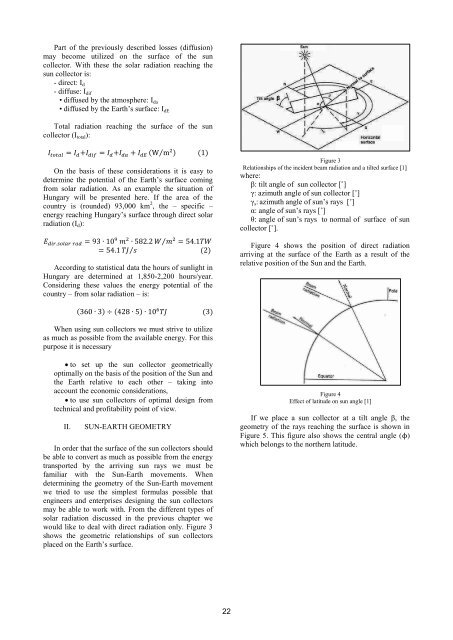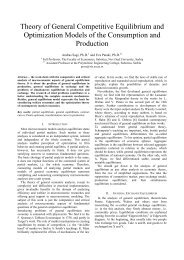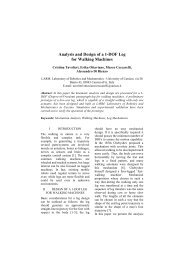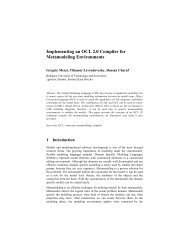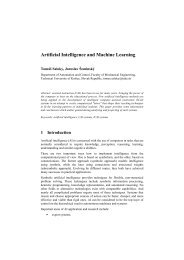Final Program EXPRES 2012 - Conferences
Final Program EXPRES 2012 - Conferences
Final Program EXPRES 2012 - Conferences
- No tags were found...
Create successful ePaper yourself
Turn your PDF publications into a flip-book with our unique Google optimized e-Paper software.
Part of the previously described losses (diffusion)may become utilized on the surface of the suncollector. With these the solar radiation reaching thesun collector is:- direct: I d- diffuse: I dif• diffused by the atmosphere: I da• diffused by the Earth’s surface: I dETotal radiation reaching the surface of the suncollector (I total ):( ⁄ ) ( )On the basis of these considerations it is easy todetermine the potential of the Earth’s surface comingfrom solar radiation. As an example the situation ofHungary will be presented here. If the area of thecountry is (rounded) 93,000 km 2 , the – specific –energy reaching Hungary’s surface through direct solarradiation (I d ):⁄⁄ ( )According to statistical data the hours of sunlight inHungary are determined at 1,850-2,200 hours/year.Considering these values the energy potential of thecountry – from solar radiation – is:Figure 3Relationships of the incident beam radiation and a tilted surface [1]where:β: tilt angle of sun collector [˚]γ: azimuth angle of sun collector [˚]γ s : azimuth angle of sun’s rays [˚]α: angle of sun’s rays [˚]θ: angle of sun’s rays to normal of surface of suncollector [˚].Figure 4 shows the position of direct radiationarriving at the surface of the Earth as a result of therelative position of the Sun and the Earth.( ) ( ) ( )When using sun collectors we must strive to utilizeas much as possible from the available energy. For thispurpose it is necessary to set up the sun collector geometricallyoptimally on the basis of the position of the Sun andthe Earth relative to each other – taking intoaccount the economic considerations, to use sun collectors of optimal design fromtechnical and profitability point of view.II.SUN-EARTH GEOMETRYIn order that the surface of the sun collectors shouldbe able to convert as much as possible from the energytransported by the arriving sun rays we must befamiliar with the Sun-Earth movements. Whendetermining the geometry of the Sun-Earth movementwe tried to use the simplest formulas possible thatengineers and enterprises designing the sun collectorsmay be able to work with. From the different types ofsolar radiation discussed in the previous chapter wewould like to deal with direct radiation only. Figure 3shows the geometric relationships of sun collectorsplaced on the Earth’s surface.Figure 4Effect of latitude on sun angle [1]If we place a sun collector at a tilt angle β, thegeometry of the rays reaching the surface is shown inFigure 5. This figure also shows the central angle (ϕ)which belongs to the northern latitude.22


